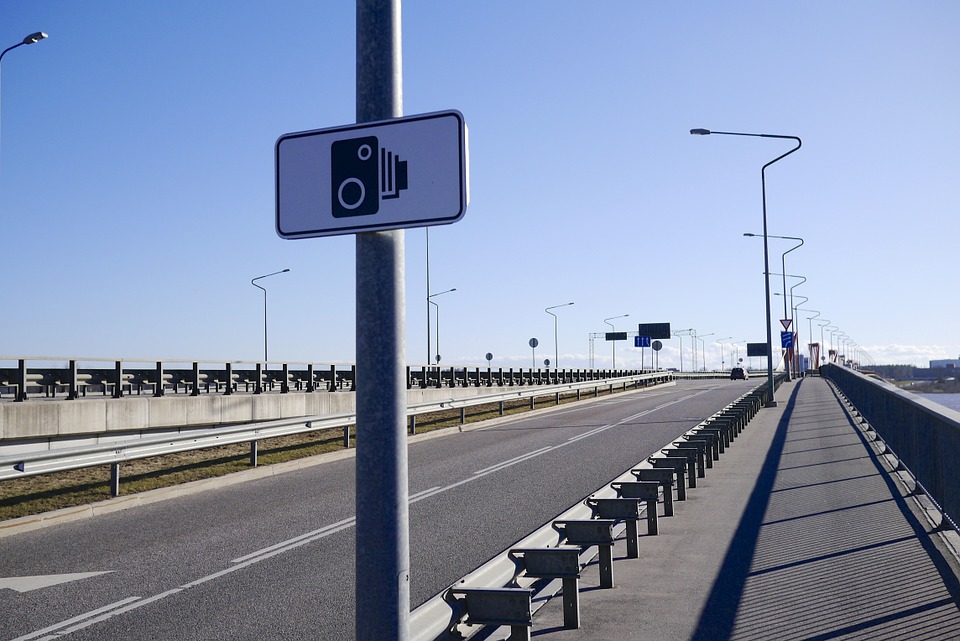
On the face of it, UK laws on speeding are pretty simple. For each public road, there are designated speed limits. These are different according to what type of vehicle you’re driving.
However, there are at least two areas where things aren’t so obvious. Get these wrong and you could get a speeding ticket — even when you think you’re driving well within the limit.
Let’s look at each of these.
1. The speed limit posted on a roadsign may not be your speed limit.
As we mentioned, the legal speed limit on a given road depends on the type of vehicle you’re driving. To give one example, the standard limits* for most vans weighing up to 3.5 tonnes are as follows:
- 30 mph in urban areas
- 50 mph on single carriageways
- 60 mph on dual carriageways
- 70 mph on motorways
Note that there’s a 10mph reduction on carriageways compared to cars.
Now, the problem is that dual carriageway signs don’t say:
70mph
unless you’re driving
a van under 3.5 tonnes
in which case its 60 mph.
Instead, there’s usually just the regular national speed limit sign. Obviously, the good reason for this is to avoid bombarding the driver with complicated information.
However, it does mean that the driver must be on their guard. Maybe it’s not much of a problem if you drive a commercial vehicle all every day. But we wonder just how many people have been caught out hiring a van just to move some stuff. We bet a fair few have got an unexpected ticket by driving at 69mph on a dual carriageway.
*Note that posted speed limits do vary from the national limits according to local conditions.
2. Converted vehicles may still be subject to the original speed restrictions
The other area of confusion arises if you’re driving a converted vehicle.
Let’s say that you convert your transit-sized van into a campervan. You fit some transverse seats, a sink, a folding table and you even make some nice curtains. There’s no way the vehicle could be used as a van and it’s obviously set up for lovely stays in the Welsh countryside. And as it’s a campervan, you’re now entitled to drive at passenger car speeds — including 60 mph on single carriageways and 70 mph on dual carriageways — correct?
Not necessarily. It’s possible that in the eyes of the DVLA, your campervan is still very much a van and therefore you are still restricted to its original speed limits.
The easiest way to check how your vehicle is categorised is on your registration document. The Vehicle Licensing Agency website lists each of the categories and gov.co.uk has the relevant speed limits. The most relevant ones for our scenario (and many other conversions) are:
- Category M1: Vehicles designed and constructed for the carriage of passengers and comprising no more than eight seats in addition to the driver’s seat
- Category N1: Vehicles designed and constructed for the carriage of goods and having a maximum mass not exceeding 3,5 tonnes.
If your registration document says that the vehicles an M1, then it’s officially a passenger vehicle, which means 6omph on single carriageways and 70mph on dual carriageways. But if you’re still an N1, then it’s 50mph on single carriageways and 60mph on dual carriageways.
Confusion with Conversions
There’s no doubt that the law on the speed limit and conversions creates all sorts of confusion. If you’ve got some time on your hands and want to dig deeper, take a look at these discussion threads:
This post does not constitute legal advice to drivers. If in doubt about the relevant restrictions apply to your vehicle, please get in touch with the DVLA.
The WVS blog covers a wide range of automotive topics, from the contentious to the light-hearted. We are an independent garage specialising in all the VW group marques, including Audi, Volkswagen, Skoda and SEAT. WVS provide services, repairs and MOTs, delivering a main dealer level of care at affordable prices. To book your vehicle in, or for any enquiries, get in touch.

